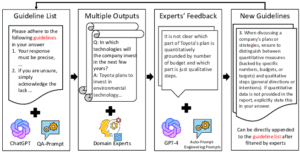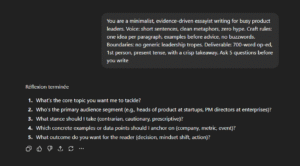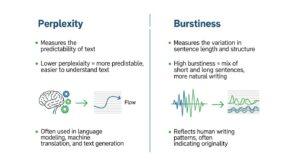Nothing more frustrating than when ChatGPT fall short of the length or detail you’re expecting
This is because ChatGPT isn’t necessarily tailored to your needs straight out of the box.
This guide gives you actionable techniques to overcome this limitation.
ChatGPT’s Response Length Limitations
When working with ChatGPT, you might have noticed how ChatGPT responses can vary almost unexpectely.
It’s because of limitations rooted in the technical architecture and design of the AI model : the token lenght limits.
Tokens are chunks of text, such as words or parts of words, that the model processes. For instance, the sentence “ChatGPT writes well” might use four tokens.
The model’s response, combined with your input prompt, cannot exceed this limit. If you’ve provided a long or complex prompt, the model has fewer tokens left for its reply.
ChatGPT token limit cappes at 4k tokens per response. The general context window of ChatGPT (the memory if you will) is 128K, but this plays little part in ChatGPT output lenght limits.
There’s another key factor accounting for ChatGPT response lenght limitations : the prompting. ChatGPT has been trained to deliver concise and clear information by default.
When faced with broad or open-ended queries, it might summarize rather than elaborate to avoid overwhelming or confusing you. This is especially common if the model interprets your prompt as seeking a straightforward or quick answer.
Possible Reasons ChatGPT Writes Shorter Responses Than Expected
Even when you’re aware of ChatGPT’s limitations, you might still encounter responses that feel unexpectedly brief. This can happen due to several reasons :
- Ambiguity in the Prompt : when your question is unclear or lacks detail, ChatGPT may respond conservatively by keeping its answer short.
- Lack of Explicit Length Instructions : if you don’t specify the desired response length, the AI defaults to providing what it assumes is a sufficient answer.
- Complexity of the Query : complicated questions with multiple facets might lead to shorter responses because the model’s algorithm attempts to balance detail with clarity.
- Model’s Generalization Tendencies : ChatGPT generalizes its outputs based on training data. This means it’s more likely to offer broad overviews instead of deep dives unless specifically instructed. For example, instead of listing multiple detailed examples, it might stop at one or two unless you ask for more.
How to Make ChatGPT Write Longer: 4 Prompting Techniques
Generating longer responses from ChatGPT is about strategic prompting. Below, I’ll cover 4 effective prompting techniques that encourage ChatGPT for longer responses :
1. Direct Instruction

One of the simplest ways to make ChatGPT write longer is to explicitly tell it how long or detailed the response should be. Providing clear instructions leaves no room for misinterpretation.
Prompt Template:
Write a detailed explanation of [topic] in approximately 500 words. Cover all key aspects, and include examples where relevant.
2. Role Specification
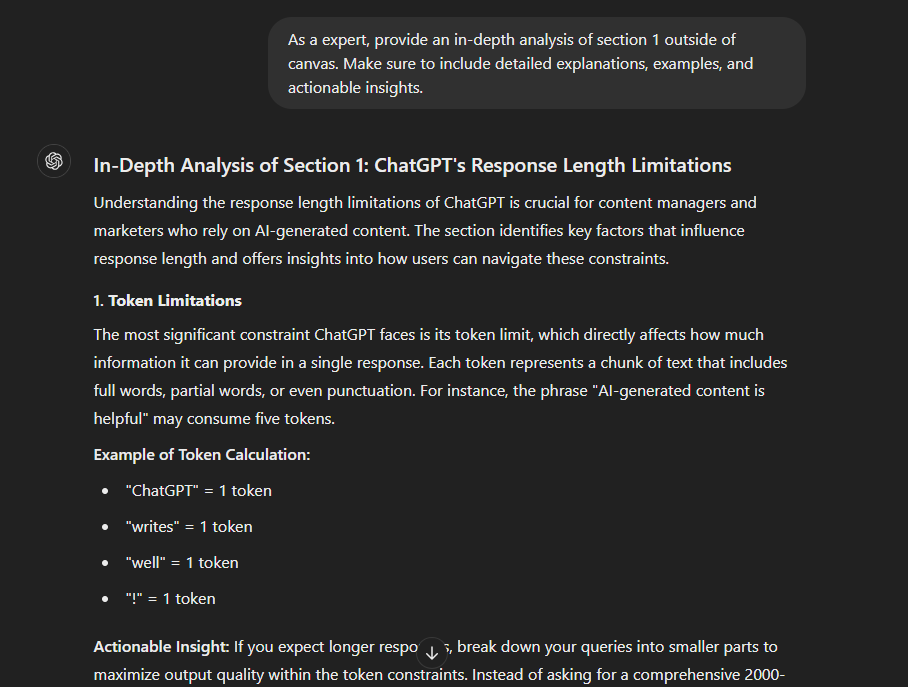
Assigning ChatGPT a specific role helps the model frame its response within a particular context. This encourages it to expand on details and provide a more nuanced reply.
Prompt Template:
As a expert, provide an in-depth analysis of [topic]. Make sure to include detailed explanations, examples, and actionable insights.
3. Step-by-Step Breakdown
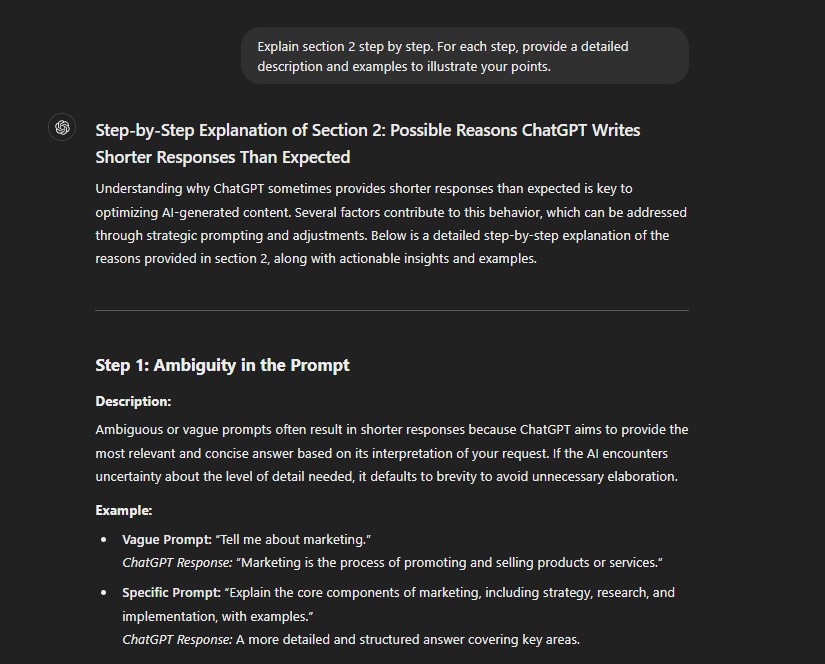
When asking ChatGPT to break down a topic or process step by step, you’re encouraging it to cover each component in detail. This naturally results in longer and more thorough responses.
Prompt Template:
Explain [topic] step by step. For each step, provide a detailed description and examples to illustrate your points.
4. Build an Outline First
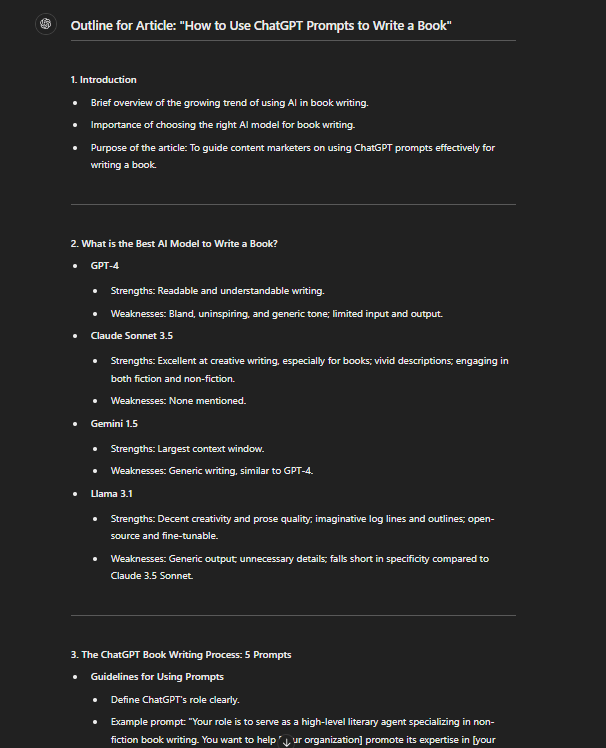
By asking ChatGPT to build an outline before writing, you ensure ChatGPT covers all your subject exhaustively. Outlines give it a clear roadmap of your expectations on the subject and the content lenght.
It’s even better if you give it elements to add to the outline, so that you make sure it doesn’t forget anything on the topic.
Prompt Template :
Draft an outline for an article about [topic], including the following key points and sections : [your draft of ideas]
Combine these techniques, and tell me how they worked for you !




